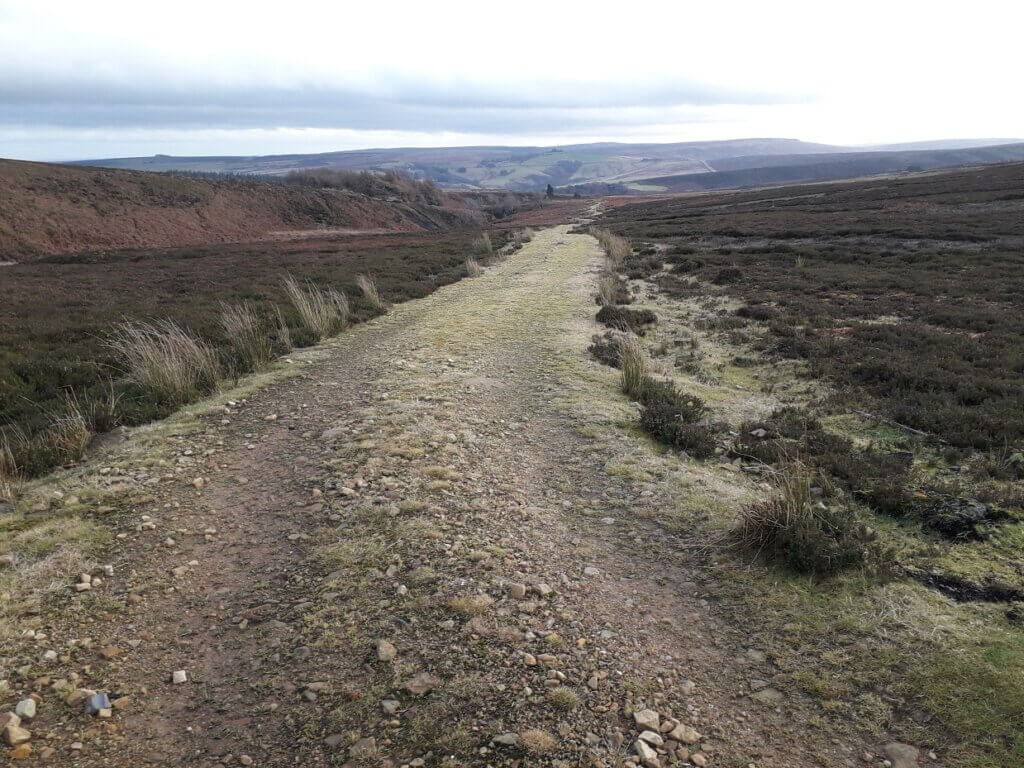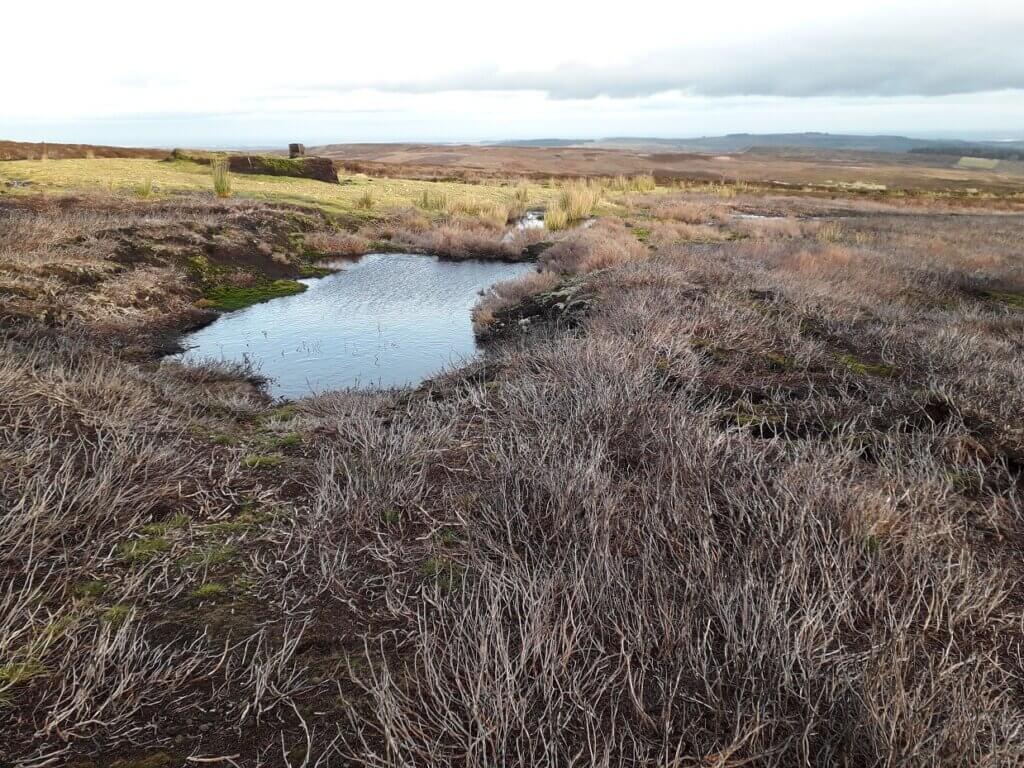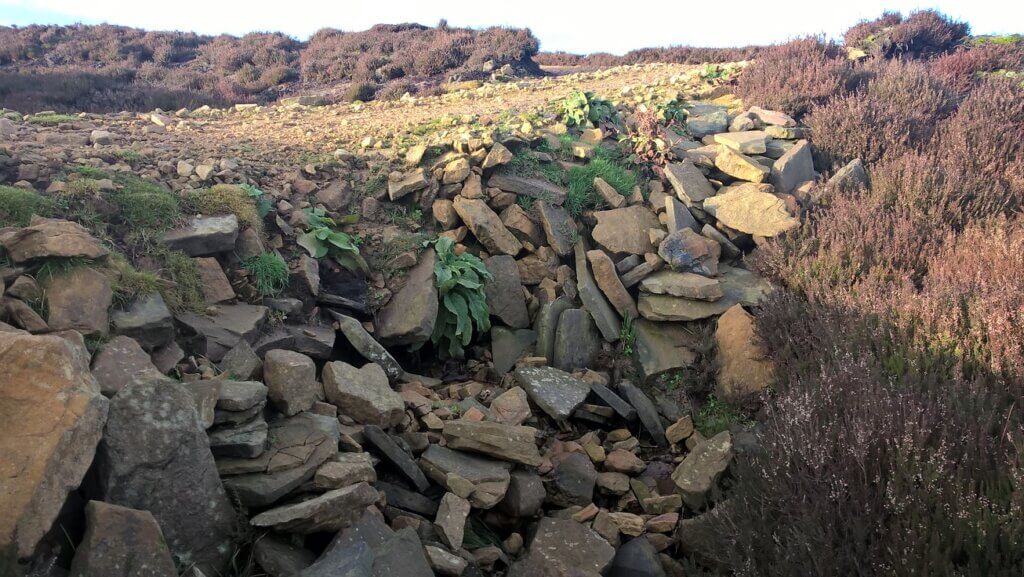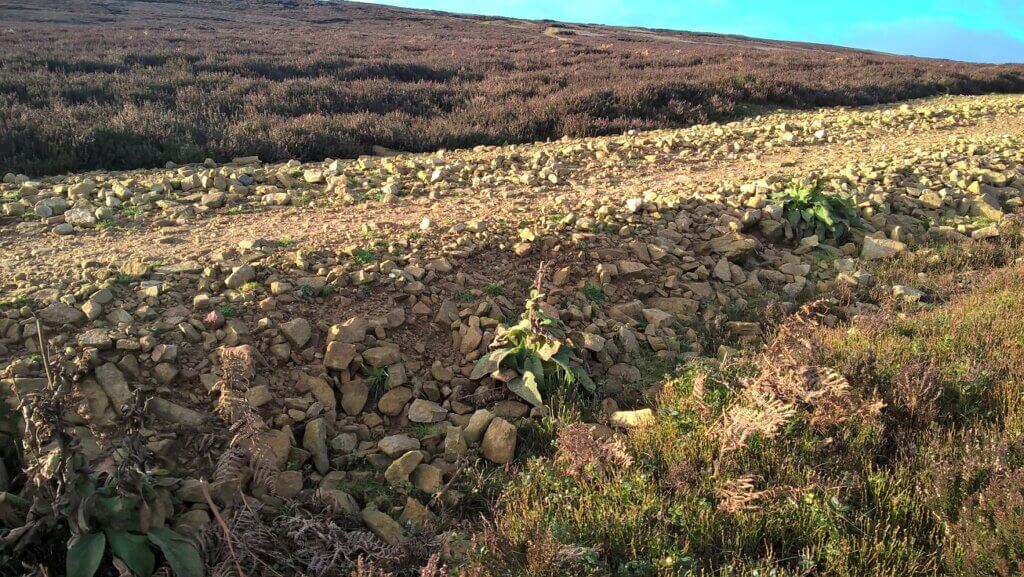
Bob is a campaigner and activist. His novel Snared will be available in the new year.
Grouse Shooting, a Track and The Law
I arrived at a workshop to be greeted by a land agent as if I was a long lost friend, then spent the morning in a group with one of his gamekeepers adding post-it notes to a chart. What struck me here was no matter how many hen harriers go missing, no matter how many peregrines and goshawks are shot and poisoned, shooting estates are welcomed with open arms and this legitimises grouse shooting and all that goes with it. The workshop was part of a project to improve raptor numbers and public awareness. What would it take for organisations to say to an estate – “You’re not welcome any more”? Clearly, it needs more than this report on raptor persecution, which has a lot to say about their patch.
So, how about the controversy surrounding the construction of this track (see previous blogs; here from February 2017 and here from January this year)?

Grouse Moor owners say they need to build moorland tracks for management which includes predator control and burning heather. This estate burned precious blanket bog adjacent to the track in Feb/March 2019 despite signing a voluntary agreement not to do this. £586,000 of taxpayer’s money was spent on moorland restoration in 2016/17 to build dams like that shown in the photo below, to slow down water flows and encourage sphagnum growth.

But the estate has burned the surrounding blanket bog, damaging sphagnum and speeding up water flows with dams failing to collect all the run off – so taxpayers’ money is being wasted. Finally it seems a contradiction that estates want tracks for access so they can start their own fires – they also want tracks to enable wild fires to be extinguished. But a recent study shows wild fires starting near roadside barbeque sites and this is where fire prevention needs to be concentrated.
Track Construction: To recap – about 2000 tonnes of aggregate were laid down in 2014 across protected blanket bog to form a surfaced road – without planning permission. Some sections of the existing route had logs laid across vehicle ruts. Natural England had given consent for a small amount of stone to be added.
Five years of campaigning, and work by the National Park Authority to clarify planning regulations, resulted in an enforcement notice for the removal of the track and the estate appealed. A Planning Inspector made a ruling on 9 May 2019 that was remarkable for its grasp of the importance of the National Park and SAC (Special Area of Conservation) designated blanket bog. It gave the estate 4 months (to 9 September 2019) to remove the track.
Some highlights of the Planning Inspector’s ruling:
(34) The track crosses open moorland that is characterised by its expansive aspect and lack of obvious human influence. It cuts across the landscape and is visually intrusive and damaging to the area’s valued characteristics. Comparing the impact of the track to what existed previously, it is now a defined and obvious manmade feature through an otherwise wild landscape. The previous route was less intrusive. Consequently, its effect is not neutral and the defined valued landscape character is not conserved.
(44) I attribute the nature conservation importance of the Dark Peak area to its blanket bog habitat, which is defined as irreplaceable habitat in Annex 2 of the National Planning Policy Framework (the Framework)15, the breeding bird populations and upland vegetation.
(49) In addition, the development is likely to have a continuing adverse impact on the designated SSSI. The benefits of the track include providing access to the upper moorland for land management and stewardship purposes, which carries due weight. However, this would not outweigh the impact which adversely affects the special interest features of the SSSI.
Natural England’s role in all this can only be described as shameful. Their 2014 Habitats Regulations Assessment states:
“Addition of light dressing of stone to the timber surface is not strictly necessary to prevent damage to the SAC but it will create a more even surface. The amount of stone is unlikely to significantly affect the underlying peat (beyond the impact of the current timber surface)”
These two photos show the “light dressing of stone” which was actually laid down:


The Planning Inspector’s ruling sees the development for what it is:
(48) However, in this case, Natural England assessed a scheme which is materially different to the development before me.
Why did NE fail to reassess the track once it had been built? They had ample opportunity to take action against the estate and demand the removal of the track, instead tinkered around the edges, literally, by asking the estate to create a few sphagnum pools at the trackside. The massive impact created by a track like this is glaringly obvious to a Planning Inspector yet Natural England remains blind to this infraction.
An FOI has revealed shocking details of the reasons for Natural England’s behaviour:
(The NE quotes below are from the NE Adviser who dealt with the case. It’s clear I haven’t received all the emails).
To be fair to the estate on 9 May they immediately asked Natural England:
“We have four months within which to return the track to its pre-stoned status. Am I right to assume that we will require SSSI consent to undertake this PDO?”
Why did Natural England take so long to clarify their position?
It took until 5 June to make the first site visit. Then Natural England say:
“The work is meant to be completed within 4 months however the first 2 months would constitute potential disturbance of breeding birds. I do wonder whether we should report this opinion to the inspector. I think that the PDNPA will be sensitive to this matter and provided the work has commenced within the 4 month period the completion might overrun. It is likely that the work will only take 2-3 weeks since there is no requirement other than to remove the stone.”
So immediately Natural England are talking about track removal overrunning the 4-month deadline even though by their estimate there’s ample time to complete the work within the timescale, even taking into account nesting birds. NE then prevaricated until 5 September, giving the estate 4 days to remove the track. There is absolutely no justification for this delay and it shows contempt for the Planning Inspector and Planning Authority.
What are Natural England’s plans for Restoration?
(5 June) “I think that the inspectors finding leaves the use of timber as an appropriate maintain and repair operation (so not subject to planning control, though this might need confirmation from PDNPA). It might be that a fully timbered track (with continual upkeep) is the likely endpoint”
(5 June) “The track on completion of the stone removal phase will require a fresh assessment however this is not part of the enforcement.”
There are no plans for restoration of the SAC designated blanket bog other than a vague mention of a fresh assessment. The blanket bog is over a metre deep and logs were rotting and sinking into the peat before the stone was added – this is the preferred solution. The track with stone in place continues to sink into the bog.
Do Natural England and the estate have to abide by the Planning Inspectors ruling?
(5 September) “Having reviewed the case it is the opinion of Natural England that the legally binding enforcement notice issued by PDNPA (as a public body and itself having a duty to take into consideration the statutory interest of the SSSI) places a burden on Fitzwilliam-Wentworth Estates that cannot be amended or otherwise conditioned by Natural England (through a consent).”
What is Natural England’s true opinion of the stone track construction?
(5 June) “I am of the opinion that the track as it is [ie with stone] represents the best solution for the SSSI to the use of this route for the access to the butts”
(5 September) “On the other points raised in your email it is not in question that Natural England consented to the track (or rather a form of it close to what was actually created) and that the additional uses, in addition to the principal use identified by the Inspector, described by you are real and of value to the management of the site. When Natural England considered the breach of the terms of the consent, prior to development control consideration, we considered that the removal of stone where it had been used (applied and driven upon) would be more damaging than retaining the extent of material in breach”.
Natural England have learnt nothing from this case, they defend the actions of the grouse moor owners and are telling the shooting community – if you have some shooting butts, build a track then we’ll say it’s too damaging to remove it.
There is an obvious solution for the benefit of the National Park – remove the stone and the timber, restore the bog as much as possible and shooting clients can walk a few hundred metres.
Enforcement, Prosecution and Proceeds Of Crime Act
We are now 3 months beyond the date when the track should have been removed and implementation of the enforcement notice is now the responsibility of the Peak Park Planners. They have a track record of prosecuting breaches in planning regulations, such as this 2016 case where a landowner removed protected trees and was handed a £20,000 fine.
Then there’s this fascinating case where a couple ignored a preservation order on a listed building and removed a historical feature. “If an Enforcement Notice is validly served and not complied with, the notice comes into force and the offender is then open to prosecution. Non-compliance with an Enforcement Notice is a criminal offence.” And the offender is liable to prosecution under the Proceeds Of Crime Act 2002. The actions on the listed building increased the value by £40,000 so this is the amount that was recovered.
It seems that the estate is now risking prosecution under the Proceeds of Crime Act. How might they have benefitted by delaying or refusing to remove the track? The 2019 season on the whole has been poor for shooting but despite this, temporary shooting butts appeared at the track, increasing the total number of butts to 13 and estates in the area have boosted game numbers by releasing partridge onto the moors. It looks to me as if quite a bit of shooting did go on.


The value of a day’s shooting would be in the region of £40,000 and the track remaining in place in breach of the enforcement, would be a crime and would have facilitated this income. The Proceeds Of Crime Act would claim back the grouse shooting income and likely add a fine on top.
Of course it would be a job for the police to determine how much, if any shooting actually took place. We’re not talking about trifling wildlife crime here but a serious offence normally associated with organised crime. But this is the police force we’re dealing with.
If the estate fails to remove the track
“The local planning authority has powers to enter enforcement notice land and carry out the requirements of the notice themselves. Further, the local planning authority can recover from the person who is then the owner of the land any expenses reasonably incurred by them in undertaking this work”. Cost for removal of around 2000 tonnes of aggregate from a remote location – my guess would be about £100,000?
Summary
Tony Juniper really does need to look at the conduct and motivation of Natural England Advisers and Senior Management who made all the decisions in this case. And he needs to make sure the protected blanket bog is restored.
If the estate is brazen enough to defy the planners, it will need very deep pockets and this may ultimately end with imprisonment.
Mark writes: I’d be very interested in a guest blog from the land owner/estate manager putting any alternative point of view.
[registration_form]
Great work Bob. I am so impressed with your approach to this matter.
Its not only the access that they provide to facilitate burning of blanket bog, but tracks across deep peat interrupt diffuse hydrological flows through the surface layers of the peat (acrotelm) and will ‘starve’ areas of peat downslope of the track of water. This can be up to 100-200m below so large areas of deep peat can be affected. This allows drying out fo the peat resulting in CO2 loss to the atmosphere. Much work has been done on this in relation to wind farms on deep peat, where the greatest impacts are not the turbines, but the tracks in between. Recreating the diffuse hydrological flows is not easy, simply floating the track is not always the answer, as over time the track invariably sinks forming a barrier to water flow.
Well done Bob . You have put a lot of work into this .
Great blog. I’ve been trying to find out about this track and also the plastic one on Midhope Moor as I understand that should have been removed too. I just get so angry that this isn’t dealt with appropriately. Breaking the law is just that.
How can the track be anything other than habitat damage and a reduction in extent?
The original unmade route was not necessary for the conservation management of the SAC. There was an obligation on the UK government to ensure that it’s damaging impact was removed and the site restored.
Circus – yep!
Who needs a track to damage a rare habitat.15 years ago I confronted a surveyor on a quad bike doing a 3m square GPS survey on a ground nesting bird site in may. It was being conducted on behalf of the local authority who at that time thought nothing of tracking heavy machinery over the largest area of vegitated shingle in Hampshire and an SSSI. Despite my protests and annually signing the site at the appropriate times the site is still vulnerable to such incursions today. It is somewhat depressing to be told by the RSPB that they support this councils local plan despite this same SSSI planned to be d
regenerated and cut in half by a development that compensates for area’s lost to coastal erosion. The RSPB working in cahoots with a developer are attempting to setup a sanctuary for Brent geese and deliver a biodiversity nett gain from what isn’t built on. This is despite 1 in 4 of the local population objecting to greenfield development. This is hardly “working with agriculture” or ” finding a home for nature” . The RSPB are going to be complicit in damaging the RAMSAR site and SPA of the local harbours and break up a viable farm
Excellent article Bob. Isn’t it staggering that the local planning authority are the enlightened and authoritative party in this whilst Natural England are the environmental dinosaurs and apologists to the crime ridden Grouse shooting estates.